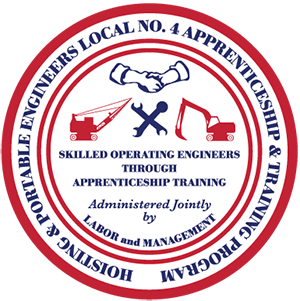Brothers and Sisters,
I am very excited to be your new Co-Safety Officer. I would like to thank Business Manager Bill McLaughlin not only for the appointment, but for his leadership and guidance through these unprecedented times. It is an honor to be a part of his team.
I would also like to congratulate our new Training Coordinator Michael Carey. He has been a valuable member of the Training Center team for several years. His professionalism and dedication will surely help us remain one of the top Training Centers in the nation. I would also like to wish John Gaffny a safe and prosperous return to the field. His mentorship and friendship mean a lot to me and the entire staff. John left the already great Training Center in better shape than when he arrived, and we can all thank him for that.
A good working knowledge of proper rigging techniques and inspection criteria is important to all Operating Engineers. No matter how well we inspect and maintain our machine, it is only as good as the rigging it is attached, too. There is plenty of good reference material out there to assist you. Two of my favorites are the NCCCO Rigger Reference Manual and the handy IPT Crane and Rigging Manual.
OSHA says that each day before being used, all slings and rigging hardware shall be inspected for damage or defects by a competent person designated by the employer. All slings that have permanently affixed and legible identifications markings as prescribed by the manufacturer that indicate the safe working load. For alloy steel chain slings, the competent person must measure the links to make sure they are within the tolerance specified by Table N in 1910.184.1. Also, alloy steel chain slings with cracked or deformed master links, coupling links, or other components shall be removed from service.
Wire rope slings shall be removed from service if they have ten randomly distributed broken wires in one rope lay, or five broken wires in one strand in one rope lay. If there is wear or scraping of one-third the original diameter of the outside individual wires, it must also be removed from service. Kinking, crushing, bird caging, or any other damage resulting in distortion of the wire rope structure also renders the sling unserviceable.
Synthetic slings are very popular on today’s job sites due to their light weight and ease of storage. This also make them more susceptible to wear. Their removal criteria are as follows: acid or caustic burns, melting or charring of any part of the sling surface, snags, punctures, tears or cuts, broken or worn stitches, or distortion of fittings.
Remember if the other trades see a squared away operator who is proactive on their inspections, they will follow suit. Ultimately, it is our call if that load gets hoisted!! Please contact the Engineers Training Center with any and all safety or training questions. Be safe!!

Thomas McEvoy
Training Instructor / Co-Safety Officer
